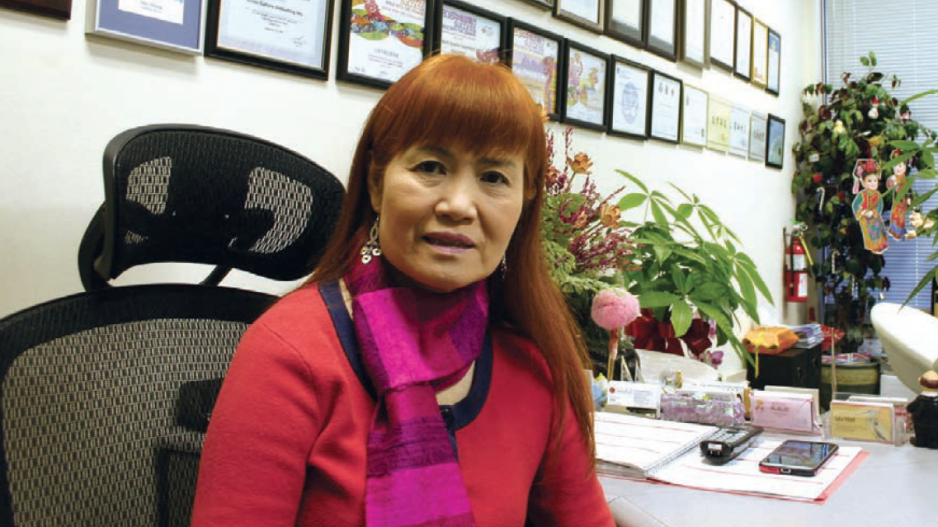After hearing about China’s ambitious One Belt, One Road (OBOR) initiative and the potential economic windfall it could bring to Canadian companies for the better part of five years, B.C. companies might finally have a concrete opportunity to latch on to the plan next year in Hong Kong.
That’s when the city will host in June the inaugural Belt and Road International Food Expo (BRIFE), where a Canadian delegation – organized by Vancouver-area-based non-profit North America Investment Association (NAIA) – will hope to bring Canadian agricultural products to markets along the OBOR routes linking China to Europe.
NAIA president Amy Huang said Canada is the only country from the Americas to confirm participation in the expo, which will include at least 50 other countries along China’s planned One Belt land route to Europe (including Russia, Turkey and Ukraine) and the One Road sea route (most of Southeast Asia, India, Pakistan and the United Arab Emirates).
Huang, who was in China in August to push Canadian goods in several trade promotional exchanges, said many of the representatives from these countries were already in Hong Kong and southern China this summer to look for food-industry partners, and Canada’s reputation as a clean and high-quality producer spurred interest during an initial outreach.
“We had a representative from India meeting with us for 30 minutes in Hong Kong, and we came away with all these business cards from officials of countries we’ve not heard of,” Huang said. “We brought some limited amount of samples, things like icewine, red wine, powdered milk and dried fruits … and they were completely gone by the time we came home a few months later.”
OBOR has been China’s most prominent economic and trade strategy since first being announced by Chinese leader Xi Jinping in 2013, and numerous academics from China travelled globally – including appearances in Vancouver, with both the University of British Columbia and Simon Fraser University – to espouse the benefits of the plan, which aims to build a modern Silk Road linking China and the European Union.
But observers have often noted the nebulous nature of OBOR. It has been promoted with many overreaching statements on general purpose but few specifics on what qualifies as an OBOR project, how much investment China has made in those projects and how the various projects link together to form the new Silk Road.
Even the extent of the initiative – purportedly to build a transportation infrastructure link – has been blurred to include trade in other services and industries along the route, including sectors such as food.
Huang said that is the key value of an expo like BRIFE: because it is labelled as part of the OBOR initiative, it will receive close attention of Chinese leaders eager to push the plan forward. That, in turn, attracts the leaders of many other countries along the route to attend and discuss opportunities pertaining to their market, meaning Canada can have direct access to many decision-makers in major growth markets like India and Indonesia to create discussion on imports and exports.
“You have the finance and trade ministers of 50 countries gathered in one place,” Huang said. “That means, if we push our Canadian products onto the stage there, there are 50 markets instantaneously exposed to Canada’s brand. If we are truly a trading nation and want as much exposure for our agricultural products as possible, an OBOR event like this one presents a major opportunity.”
NAIA, formed 11 years ago as a promoter of Canada-Asia trade, hopes to have 100 companies accompany the Canadian BRIFE delegation, and Huang said she has reached out to both B.C. companies and their counterparts in Alberta, Saskatchewan, Ontario and Quebec.
Huang said that she understands some Canadian firms’ trepidation in entering the Chinese market through OBOR, but added that business leaders need to look at the initiative (and associated events like the Hong Kong Food Expo) as more of an opening to the entire Eurasian region, rather than just the Chinese domestic market.
“I get the sense that people don’t really get OBOR,” she said. “Luckily, the show’s a few months away, so we have a chance to reach out and explain it to others. But people have to know about the opportunities that are out there; if you don’t, how do you expect to have a successful business?”
Huang also noted she will be in touch with Ottawa officials shortly to attempt to get some funding support for small and medium-sized businesses (SMEs) that want to come on the trip but don’t have the necessary resources to do so.
She also urged the provincial governments to support these SMEs in going abroad, given the competitiveness of Canada’s domestic market and the space available in trade opportunities abroad.
“New businesses need all the help they can get; if they don’t explore the opportunities available to them, they may suffer, and then we all suffer because SMEs make up such an important part of B.C.’s economy,” Huang said. “Yes, China is a big market. But we’ve also had contact with other very big markets like India, Thailand, Indonesia and Malaysia, just by being on the tangent of OBOR. It’s a very good platform for Canada to spread its wings … and, ultimately, what’s good for the economy is good for Canadian society in general. So speaking for myself and NAIA, I think it behooves us to contribute in whatever way we can.” •




